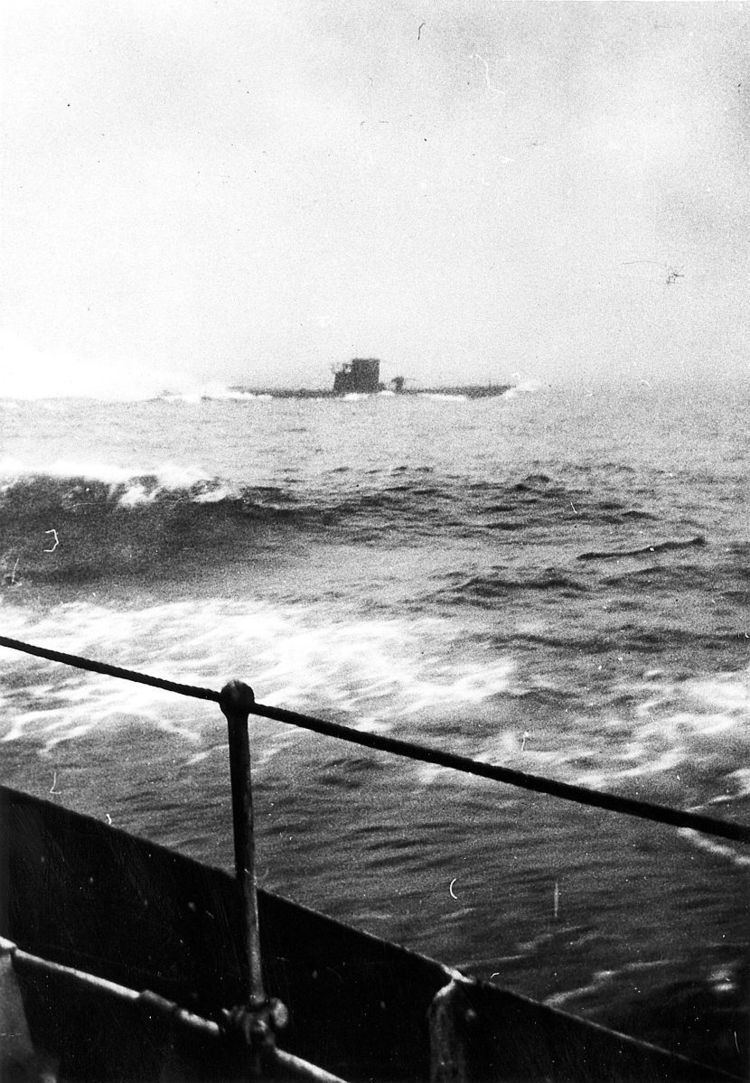Result German tactical victory | ||
 | ||
Similar Convoy SC 107, Convoy ON 166, Convoy ON 127 | ||
Convoy sc 94
Convoy SC-94 was the 94th of the numbered series of World War II Slow Convoys of merchant ships from Sydney, Cape Breton Island, Nova Scotia, to Liverpool. The ships departed Sydney on 31 July 1942 and were met by Mid-Ocean Escort Force Group C-1 consisting of the Canadian River class destroyer Assiniboine with the Flower class corvettes Battleford, Chilliwack, Dianthus, Nasturtium, Orillia, and Primrose.
Contents
- Convoy sc 94
- Background
- Discovery on 5 August
- Attack of 6 August
- Attack of 8 August
- Attack of 10 August
- References
Background
As western Atlantic coastal convoys brought an end to the second happy time, Admiral Karl Dönitz, the Befehlshaber der U-Boote (BdU) or commander in chief of U-Boats, shifted focus to the mid-Atlantic to avoid aircraft patrols. Although convoy routing was less predictable in the mid-ocean, Dönitz anticipated that the increased numbers of U-boats being produced would be able to effectively search the area with the advantage of intelligence gained through B-Dienst decryption of British Naval Cypher Number 3. However, only 20 percent of the 180 trans-Atlantic convoys sailing from the end of July 1942 until the end of April 1943 lost ships to U-boat attack.
Discovery on 5 August
U-593 reported the convoy on 5 August and torpedoed the Dutch freighter Spar.
Attack of 6 August
Assiniboine's Type 286 radar spotted U-210 in a heavy fog on 6 August. The destroyer closed on the contact and briefly spotted the submarine twice before losing her in the fog. The submarine reappeared crossing the destroyer's bow at a range of 50 yards (46 m), and both ships opened fire. The range was too close for Assiniboine's 4.7-inch guns to engage, but her .50-calibre machine guns shot up the submarine's deck and conning tower. This kept the Germans from manning their 88-millimetre (3.5 in) deck gun, but the 20-millimetre (0.79 in) flak gun was already manned and firing. It punched holes through the destroyer's plating that set some petrol tanks on the deck afire and disabled 'A' gun. The destroyer was unable to ram U-210 until the rear 4.7-inch gun hit the conning tower, killing the entire bridge crew and the .50-caliber machine guns were able to silence the flak gun. This caused Lieutenant Sorber, the senior surviving officer, to order the submarine to dive, but this meant that she had to hold a straight course while doing so. Assiniboine was able to take advantage of this and rammed U-210 abaft the conning tower whilst she was diving. This caused the electric motors to fail, damaged her propellers and led to water entering the submarine, as a result of which Sorber ordered the ballast tanks to be blown and the submarine to be abandoned. The destroyer rammed her again when U-210 resurfaced, dropped a pattern of depth charges set to detonate at shallow depth and hit her one more time with a 4.7-inch shell before the submarine finally sank.
Attack of 8 August
U-379 torpedoed the British freighter Anneberg and American freighter Kaimoku on the afternoon of 8 August while U-176 torpedoed the British freighters Kelso and Trehata and Greek freighter Mount Kassion. Three undamaged ships were abandoned in the resulting panic. One of them, the British freighter Radchurch, was later torpedoed by U-176. The Thornycroft type flotilla leader Broke and the Polish destroyer Blyskawica arrived to reinforce the escort as Dianthus left the convoy to repair damage incurred while ramming and sinking U-379.
Attack of 10 August
U-438 torpedoed the Greek freighter Condylis in daylight on 10 August while U-660 torpedoed the British freighters Cape Race, Empire Reindeer and Oregon. The remainder of the convoy reached Liverpool on 13 August.
